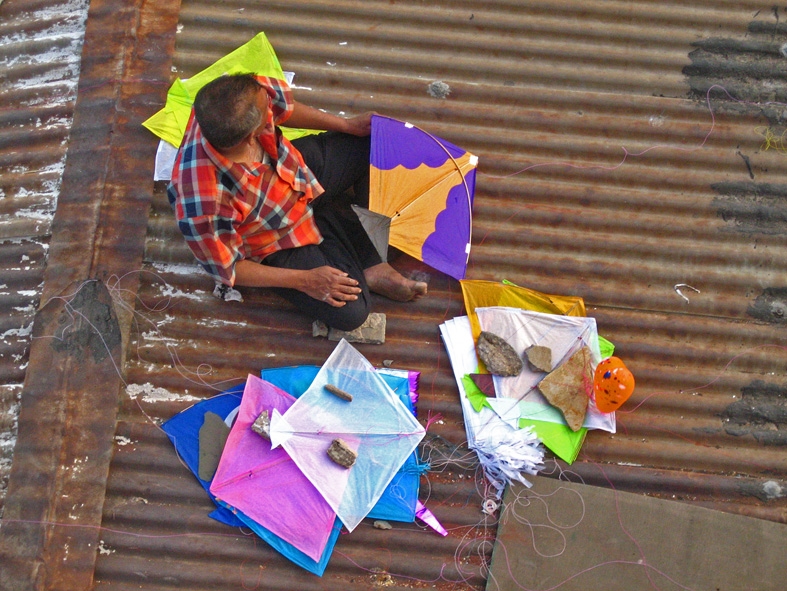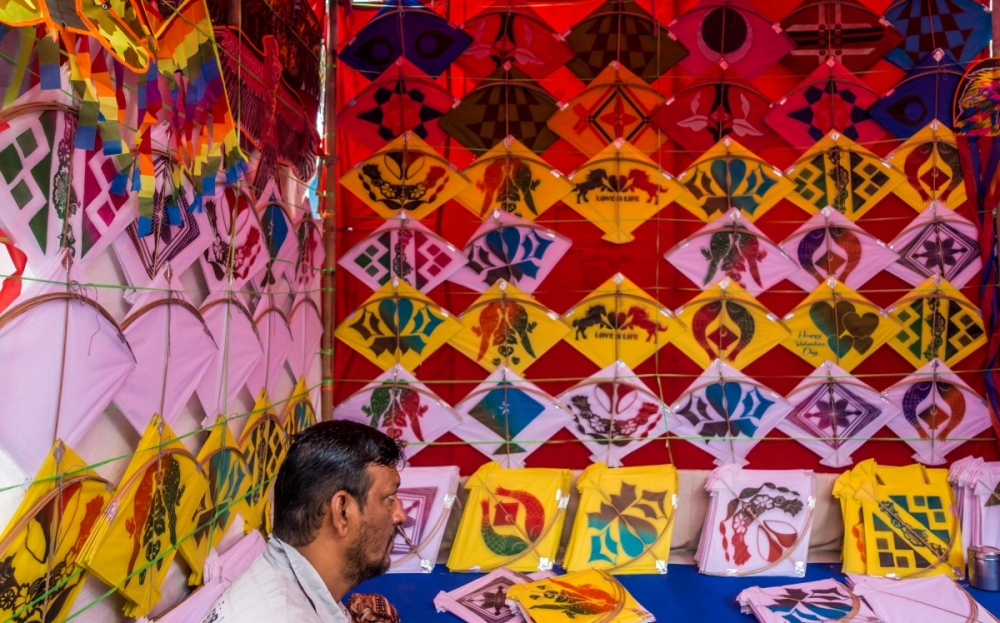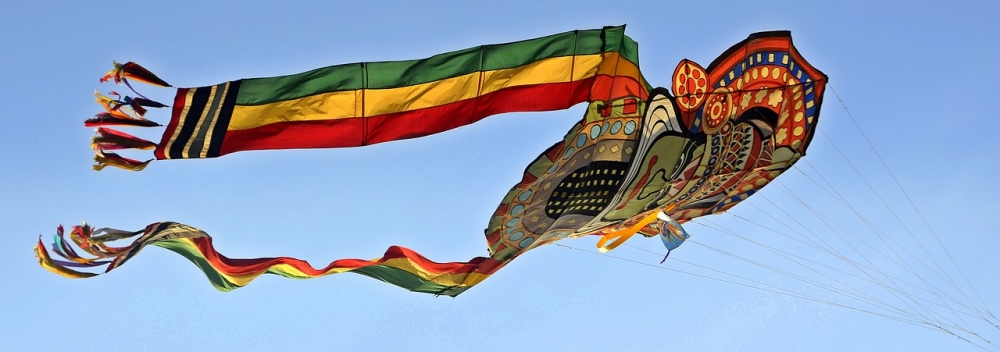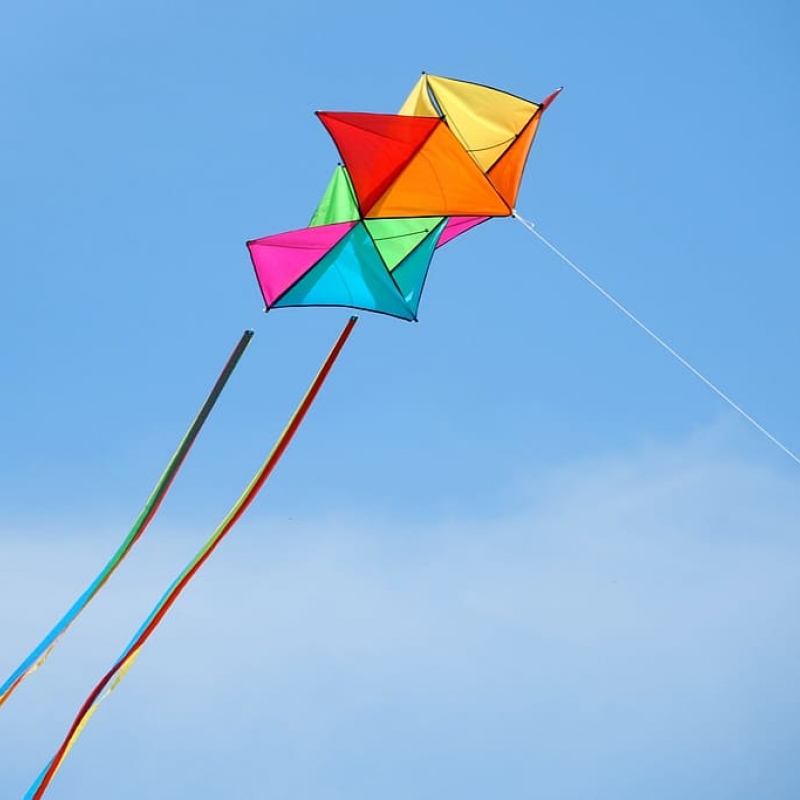Be it the festival of Makar Sankranti or Uttarayan or a celebration of Indian independence, both are synonymous with kite flying. Even though there is no historical evidence or written account of the kite’s association with the festival or the occasion, it is an age-old tradition. Here, we trace the history of the kite in the Indian subcontinent and shed light on how a Chinese invention became pivotal to various festivals across the nation. (Photo courtesy: Pxfuel)
Most of us have experienced the joy of watching vibrant kites soaring in the sky, if not flying one. Come spring, the Indian sky is often dotted with colourful kites of all shapes and sizes, and one can occasionally find a kite runner or two dangerously dashing through the gullies collecting the ones cut. While, over the years, this popular pastime and sport might have lost mass popularity, on occasions such as Makar Sankranti, Baisakhi and Independence Day, kids and adults continue to indulge in it with fervour and passion.
While the kite has a simple structure, its history in the Indian subcontinent is rather knotted. The origin of the kite is still disputed. Some historical sources suggest that the kites could have origins in Melanesia, Micronesia and Polynesia, but it is widely believed to have been invented in China. The earliest written account of kite flying, from 206 BC, mentions that Heuin Tsang had flown a kite to overawe the army of Liu Pang. Various sources suggest that by 169 BC, kite flying was in place under the Han dynasty, and that the Chinese general Han Hsin had ‘a kite flown above a besieged town to calculate the distance his army would have to tunnel to reach under the city wall.’[1] As time passed and contact was made with other cultures, along with other commodities, kites reached the Indian subcontinent.
Also see | Tusu: A Harvest Festival of Chhota Nagpur

Kites on Paper
Kites are believed to have come to India with Buddhist missionaries from the East through the Silk Route, following which they travelled to distant lands such as Arabia and Europe. The earliest written accounts of the kite in ancient Indian literature can be found in the poetry of the thirteenth-century Marathi saint and poet, Namadeva. In his poems or gathas, he called it a gudi, and there is a mention that the kites were made from kaagad (paper). Written accounts of kites also exist in the songs and poems of sixteenth-century Marathi poets such as Dasopant and Ekanatha, both of whom call it vavadi. Along with poets from Western India, there are written accounts of the kite from the Awadh region in the Satsai of the Hindi poet Bihari.
Also read | What are the Differences between Eid al-Adha and Eid al-Fitr?
In his epic poem Ramcharatramanas, the seventeenth-century poet Tulsidas also mentioned kites and provided an anecdote of how Hanuman retrieved Rama’s kite that had flown to Indralok. In the poem, he calls it a chagg. According to Nikita Desai, the author of A Different Freedom: Kite Flying in Western India, there are also mentions of kites in the Ramayana and the Vedas.

Under the Mughals, kite flying was turned into a sport, primarily among the nobility. With growing popularity, the design was also enhanced for better aerodynamics. Mughal paintings and miniatures from the time show both men and women flying kites. It is believed that upon Jahangir’s return to Delhi from a three-year exile in Allahabad in 1812, the residents of the city flew kites to celebrate his return while his mother offered a chaadar. The event is celebrated today as Phool Waalon ki Sair. There is even a mention of kite flying in Maulana Abul Halim Sharar’s translated work Lucknow: The Last Phase of an Oriental Culture; he wrote that the interest in kites grew during the reign King Shah Alam I in the eighteenth century. His account reveals that tukkals, which were similar to a Chinese lantern, were ‘favoured as fighting kites in the 18th century’ and that ‘the word patang emerged to denote the best type of tukkals.’[2]

Let's Go Fly A Kite
The tradition of kite flying continued even after the decline of the Mughal empire. It was a seasonal activity that was carried out during festivals such as Uttarayan or Makar Sankranti, and in the Punjab region, on Basant Panchami and Baisakhi. The modern-day kite came into being while India was under the colonial rule, and developed in form, shape and design. Some sources suggest that when the Simon Commission was put into place, people from the Indian subcontinent protested by flying hundreds of kites with the words ‘Go Back, Simon’. Perhaps the association of freedom with kite flying was what initiated the tradition of kite flying on the occasion of Independence Day. On August 15, the rooftops of Shahjahanabad or Old Delhi, as it is known today, are occupied by enthusiastic children and adults flying kites.
In the western part of the nation, ‘kai po che’ (‘I have cut the kite’ in Gujarati) is heard from the rooftops. The state Gujarat has been, for long, associated with kite flying and houses the Patang Kite Museum, which was conceptualised by Bhanu Shah and is a treasure trove of historical kites. The museum has 33 panels with kites and paintings that he collected from places such as the Victoria and Albert Museum in London. It is one of the few museums of its kind in the world. In 1989, the International Kite Festival was started by the government of Gujarat, and it welcomes kite enthusiasts to fly kites and witness hundreds of tiny, colourful dots on the backdrop of the blue sky.
This article was also published on The Statesman.
Notes
[1] ‘Go fly a kite,’Catholic Sentinel, September 20, 2018, accessed December 8, 2019, https://catholicsentinel.org/Content/Social/Social/Article/Go-fly-a-kite/-2/-2/36879.
[2] Abdul Halim Sharar, Lucknow: The Last Phase: The Last Phase of an Oriental Culture (New Delhi: Oxford University Press, 2000).












